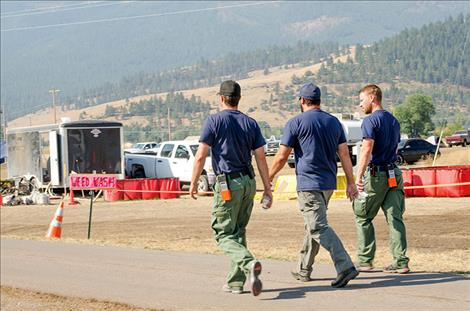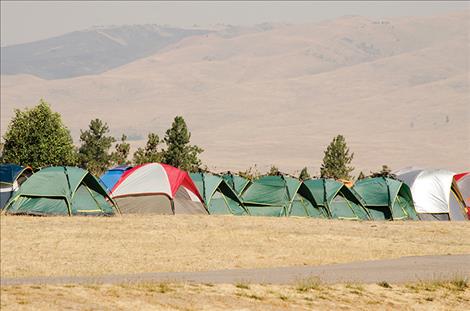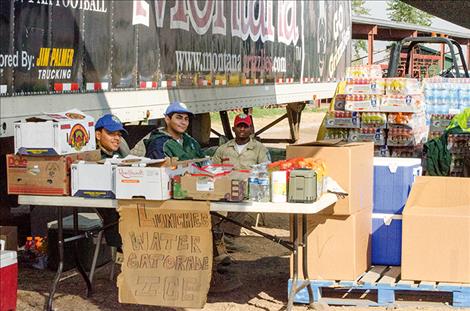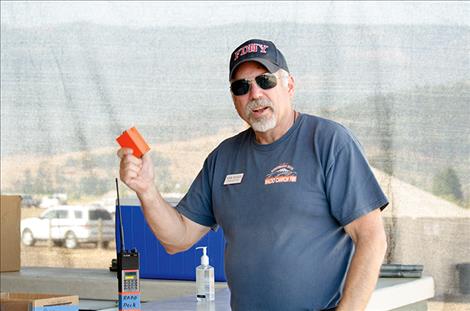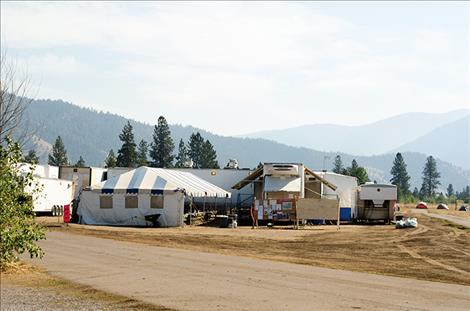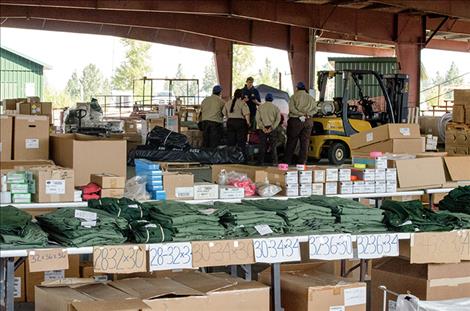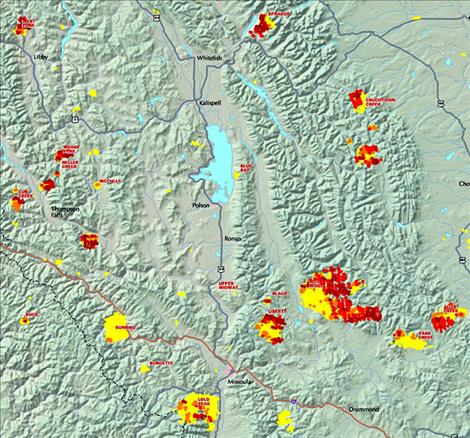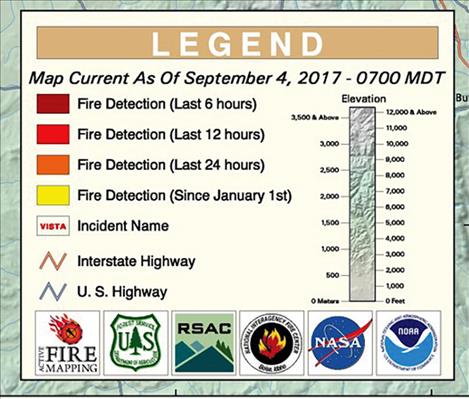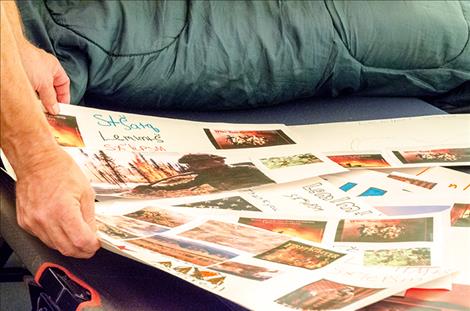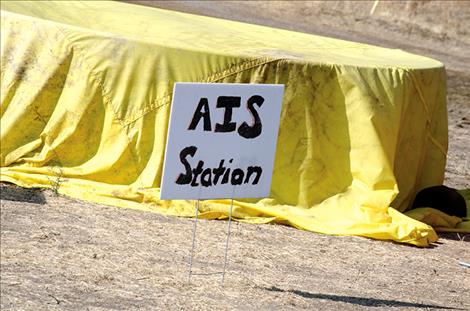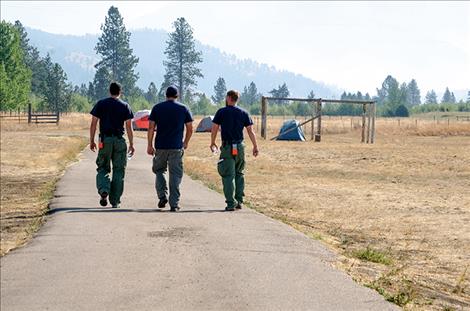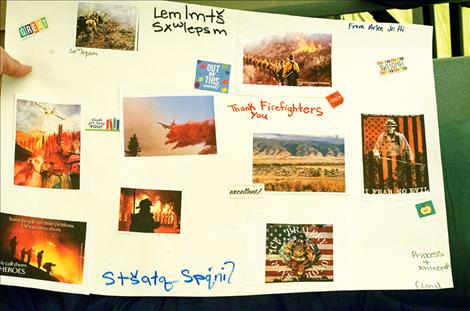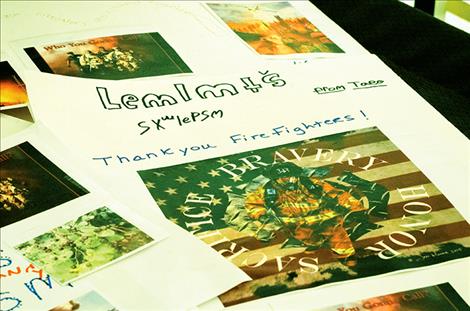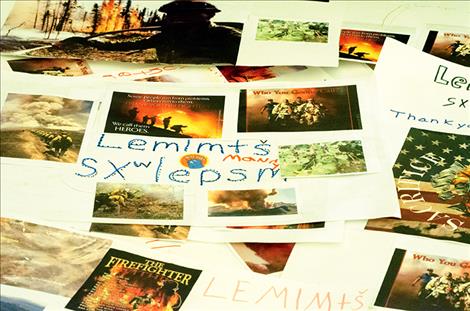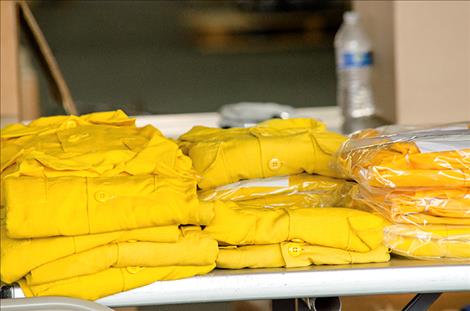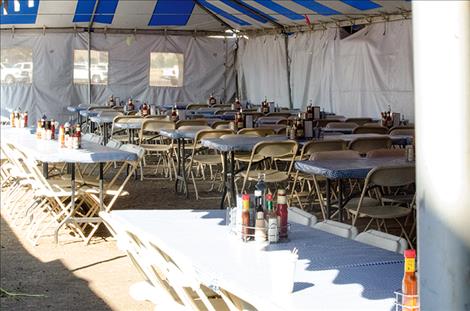Firefighters develop village in Arlee
Hey savvy news reader! Thanks for choosing local.
You are now reading
1 of 3 free articles.
ARLEE – Hundreds of firefighters have made the Arlee powwow grounds home for the past few months while they work on the Liberty fire, 17 miles southeast of town.
“The area can support an operation of this size, provide electricity, and easy access to the fire, so we’ve set up a village here,” said Information Officer Norm Rooker.
On Friday morning, Sept. 1, several firefighters were sleeping in tents on the outskirts of camp after working the nightshift. The place was relatively quiet as the majority of the 435 firefighters were in the wilderness working on fire lines.
Lightning sparked the blaze on July 15. Timber, forest litter, grass and shrubs have fueled the 15,319-acre fire. Winds usually blow smoke from the Liberty fire away from the town, but on Friday, they drifted into town, creating a campfire like smell in some areas.
“Seeley usually gets the smoke from this fire,” Rooker said. “Arlee’s smoke comes from the Sunrise fire.”
The center of the fire is burning in a mosaic pattern of burnt and un-burnt areas, he said. The north end of the fire is fairly still.
“For the past three days, we’ve been out repairing fire lines,” he said of the north side.
Flames are burning hot on the southeast side of the fire. Firefighters are working fire lines at the head of the fire on the south end in three divisions of 40 to 80 crewmembers.
On the previous Thursday, Aug. 24, they put in a containment line with bulldozers along the Mineral-Primm Fire scar from the 2003 fire where low new growth is now developing, but the fire jumped the line.
Firefighters continued to work and build up another fire line, but on Friday, the fire jumped the line, again. Crews built a third line, and on Saturday, it held.
“We were pressed hard,” he said. “On Tuesday and Wednesday, we had red flag warnings, but the line is holding.”
While under red flag warnings, winds blew at an average of 20-25 mph when a cold front moved through the area. Air resources were utilized from the helitack base in St. Ignatius to drop water where needed during the morning, but by midday, aircraft were grounded when winds created dangerous conditions.
Rooker said firefighters are containing the fire, while internal pockets continue to burn, and snow is probably the only thing that will put the fire completely out.
This fire reminds him of another wildfire that happened in 1910 known as the Big Burn. During the Big Burn, fires swept across Idaho, Montana, and Washington and eventually burned more than 3 million acres.
“With the drought, these conditions (at the Liberty fire) were identical to the Big Burn,” he said. “We’ve got better technology today, so it didn’t turn into that, and we didn’t lose 60 firefighters like they did back then.”
In the mornings, firefighters attend a fire-briefing meeting in what is usually the place where stick game is played, under the smaller pavilion at the powwow grounds. The stands, where fry bread was sold, now house the temporary medical clinic to keep firefighters healthy and the communications center where radios are distributed to firefighters so they can keep in contact.
Rooker said fire crews have their own communication lines so they don’t end up mixing with public communication or other fires. The dozens of batteries used for the radios are recycled.
The large pavilion is full of supplies where firefighters are issued things like the iconic yellow shirts and green pants, along with safety gear.
Past the pavilion, a semi-size trailer is set up with a crew from California to provide food and drinks. Cattlemen’s Meat Company out of Cut Bank, Montana, was hired to provide nutritious meals for the crews. “They also fed the folks outside of New Orleans during hurricane Katrina,” he said.
Rooker said the firefighters are fed healthy meals containing thousands of calories to replace the calories they use up on the fire lines.
In another station, a truck is set up to provide showers for the crews, and it was also contracted out to another company. “That is part of the logistics here,” he said. “We contract people out to provide these services. We’ve even hired the local Laundromat to wash the clothes. There is nothing like fresh socks.”
A technical support team was set up at another location while a town marshal is on sight to watch the gate and provide security. Machinery including two bulldozers, seven skidgines, and eight water tenders is parked at the equipment staging area. There was also a place to mix fuels for torches.
Rooker said that part of the fire effort people don’t often know about is a weed wash station where equipment and tires are sprayed down to prevent them from transporting weeds and aquatic invasive species.
“We flush out the water tanks and hoses we use for drafting,” he said of the prevention efforts.
Rooker spread out a dozen posters made by local school kids thanking the firefighters. He looked at them and said he appreciated the thanks. “We can’t take food, so this is really nice,” he said. He was getting ready to put the posters on a board at the camp for firefighters to see.
















